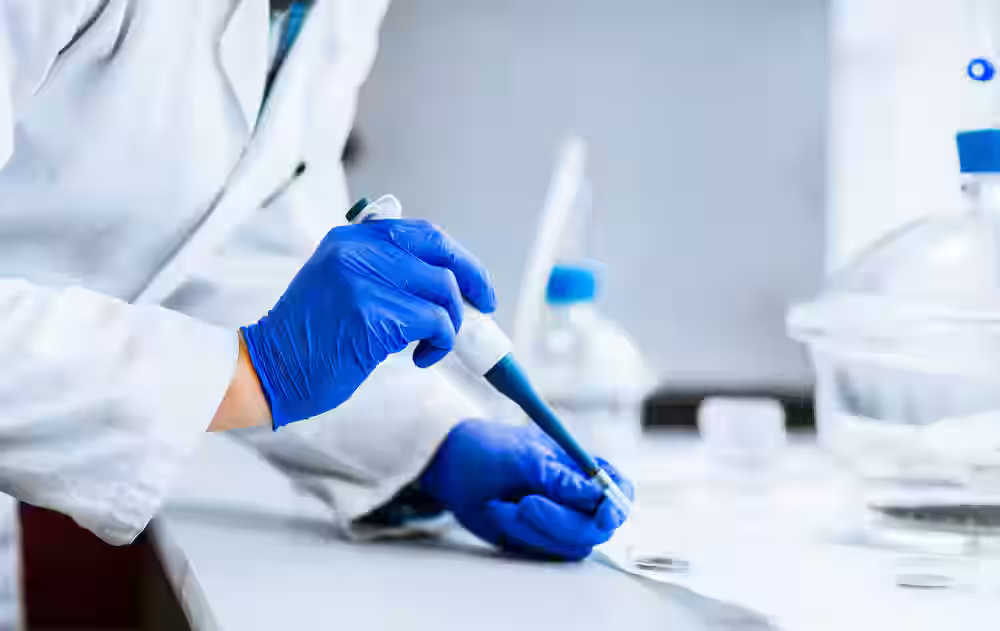Preserving Evidence Integrity and Protecting Lab Personnel
Forensic laboratories operate at the intersection of science and justice. Whether analyzing DNA, toxicology samples, trace evidence, or fingerprints, accuracy is paramount—and contamination is unacceptable. In these sensitive environments, air filtration is a critical line of defense, protecting both the integrity of evidence as well as the safety of forensic professionals and the environment.
Why Air Filtration Matters in Forensics
Unlike traditional research or clinical labs, forensic laboratories handle evidence that is often irreplaceable and highly sensitive. Uncontrolled airflow or poor filtration can lead to:
Effective air filtration ensures that the working environment supports clean handling, precise testing, and court-admissible results.
Common Contaminants in Forensics Labs
These contaminants require both particulate and gas-phase filtration systems to maintain a safe, stable lab environment.
Engineering Solutions
1. HEPA Filtration for DNA and Trace Evidence Rooms
High-efficiency particulate air (HEPA) filters remove 99.97% of particles ≥0.3 microns, minimizing contamination during DNA amplification, extraction, or trace material analysis. Many facilities use ISO 7 or ISO 8 air classification in these zones.
2. Activated Carbon Filters for VOCs
For labs working with accelerants, solvents, or latent print developers, activated carbon filtration captures chemical vapors that may interfere with analysis—or pose inhalation risks to staff.
3. Enclosed Workstations and Local Exhaust Systems
Biosafety cabinets, forensic downdraft tables, and vented enclosures provide targeted filtration and containment at the point of evidence handling.
Compliance and Accreditation Support
Proper air filtration helps meet the facility and procedural requirements outlined by:
Routine airflow validation and environmental monitoring are essential for audit readiness and legal defensibility.
Conclusion
Air filtration is not just a technical specification in forensics labs—it’s an operational safeguard. By controlling airborne contamination, forensic labs can ensure the validity of their findings, protect personnel, and uphold the chain of custody that underpins criminal justice.
Planning a new forensics facility or upgrading your lab infrastructure?
We offer modular, validated filtration systems and equipment tailored for forensic workflows—from DNA to drug chemistry and beyond. For more information, contact us at sales@dfmzgroup.com or call us at 1-888-636-8609.
Forensic laboratories operate at the intersection of science and justice. Whether analyzing DNA, toxicology samples, trace evidence, or fingerprints, accuracy is paramount—and contamination is unacceptable. In these sensitive environments, air filtration is a critical line of defense, protecting both the integrity of evidence as well as the safety of forensic professionals and the environment.
Why Air Filtration Matters in Forensics
Unlike traditional research or clinical labs, forensic laboratories handle evidence that is often irreplaceable and highly sensitive. Uncontrolled airflow or poor filtration can lead to:
- Cross-contamination of biological evidence
- Compromised DNA analysis due to airborne skin cells or hair
- Degradation of trace evidence from dust or chemical fumes
- Inhalation risks from volatile compounds or drug residues
Effective air filtration ensures that the working environment supports clean handling, precise testing, and court-admissible results.
Common Contaminants in Forensics Labs
- Biological particulates (e.g., epithelial cells, blood aerosols)
- Chemical fumes (e.g., solvents, reagents, accelerants)
- Microscopic trace evidence (fibers, gunshot residue, dust)
- Volatile organic compounds (VOCs) from fingerprint processing or arson evidence)
These contaminants require both particulate and gas-phase filtration systems to maintain a safe, stable lab environment.
Engineering Solutions
1. HEPA Filtration for DNA and Trace Evidence Rooms
High-efficiency particulate air (HEPA) filters remove 99.97% of particles ≥0.3 microns, minimizing contamination during DNA amplification, extraction, or trace material analysis. Many facilities use ISO 7 or ISO 8 air classification in these zones.
2. Activated Carbon Filters for VOCs
For labs working with accelerants, solvents, or latent print developers, activated carbon filtration captures chemical vapors that may interfere with analysis—or pose inhalation risks to staff.
3. Enclosed Workstations and Local Exhaust Systems
Biosafety cabinets, forensic downdraft tables, and vented enclosures provide targeted filtration and containment at the point of evidence handling.
Compliance and Accreditation Support
Proper air filtration helps meet the facility and procedural requirements outlined by:
- ASCLD/LAB (ANSI National Accreditation Board)
- ISO/IEC 17025 (Testing and Calibration Laboratories)
- NIJ and FBI guidelines for DNA evidence processing
- RCMP-NFLS guidelines for collection, preservation, and shipping of physical evidence
Routine airflow validation and environmental monitoring are essential for audit readiness and legal defensibility.
Conclusion
Air filtration is not just a technical specification in forensics labs—it’s an operational safeguard. By controlling airborne contamination, forensic labs can ensure the validity of their findings, protect personnel, and uphold the chain of custody that underpins criminal justice.
Planning a new forensics facility or upgrading your lab infrastructure?
We offer modular, validated filtration systems and equipment tailored for forensic workflows—from DNA to drug chemistry and beyond. For more information, contact us at sales@dfmzgroup.com or call us at 1-888-636-8609.
